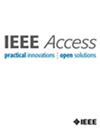用于跳转和接入点分配的翻牌决策技术:混合 LiFi 网络的新方法
IF 3.4
3区 计算机科学
Q2 COMPUTER SCIENCE, INFORMATION SYSTEMS
引用次数: 0
摘要
LiFi/WiFi 混合通信网络在数据传输速率方面已显示出其功效和优势。在这些网络中发现了多种困难,包括接入点分配(APA)和切换过程(HO)。这些问题(标准)受到多种因素的影响,包括接收方的光增益、移动性、距离、阻塞、阴影和其他变量。为了获得更精确的结果,在决策时评估多个标准至关重要。然而,迄今为止,针对 LiFi/WiFi 混合网络采用多标准决策(MCDM)技术的研究还很有限。然而,尽管 MCDM 技术非常精确,但要实现最佳接入点(AP)却需要一个漫长的过程。这就增加了系统的复杂性,导致更长的接入点传输时间和更高的 HO 率。为了解决上述制约因素,本文引入了一种称为翻卡决策(CFDM)的新方法。CFDM 可实现快速、精确的决策,同时最大限度地降低计算复杂度。此外,它还包含了绕过 HO 并选择最优 AP 的 HO 率。本研究采用层次分析法(AHP)来估算各标准的主观权重并确定其优先级。本研究提出的方法与 AHP 相结合,称为合并 AHP-CFDM。这种整合被认为是一种新的 MCDM 技术。建议的方法由以下算法组成:i) 基于标准值的标准细分;ii) 基于 AHP 结果的标准排序;iii) 基于网络类型的标准分组。此外,还考虑了标准的分类,包括成本和效益标准。建议的算法将每条标准视为一张卡片,必要时翻转(计算)每张卡片。AHP-CFDM 决策的结果是 "跳过"、"翻转 "和 "指定"。所提出的 AHP-CFDM 是一种新的 MCDM 技术,可用于其他网络和/或应用的决策。与标准方法和基准技术相比,该研究在计算复杂度和 HO 率方面提高了系统总效率。模拟结果表明,与最相关的研究相比,所提出的策略明显优于其他方法。本文章由计算机程序翻译,如有差异,请以英文原文为准。
Card-Flipping Decision-Making Technique for Handover Skipping and Access Point Assignment: A Novel Approach for Hybrid LiFi Networks
The hybrid LiFi/WiFi communication networks have demonstrated their efficacy and advantages in terms of data transmission rates. Multiple difficulties were identified in these networks, including the access point assignment (APA) and the process of handover (HO). These troubles (criteria) are influenced by multiple elements, including optical gain at the recipient, mobility, distance, blockage, shadowing, and other variables. It is crucial to evaluate multiple criteria when making-decisions in order to attain more precise results. However, as far, limited studies employing the multicriteria decision-making (MCDM) technique for a hybrid LiFi/WiFi network has been discovered. Nevertheless, although the MCDM technique is highly accurate, it involves long process to achieve the optimal access point (AP). This results in heightened complexity of the system, leading to longer AP transfer times and higher HO rates. In order to address the aforementioned constraints, this paper introduces a novel approach termed as card-flipping decision making (CFDM). CFDM enables swift and precise decision-making while minimizing computational complexity. Additionally, it incorporates HO rates that involve bypassing HOs and selecting the most optimal AP. The analytic hierarchy process (AHP) is adopted to estimate the subjective weights of each criterion and establish their level of priority. The proposed method provided in this study is combined with the AHP, referred to as the merged AHP-CFDM. This integration is considered a new MCDM technique. The proposed method consists of an algorithm that performs i) criteria segmentation based on criteria values, ii) criteria sortation based on AHP results, and iii) criteria grouping based on network type. The classification of criteria is also taken into account including cost and benefit criteria. The proposed algorithm treats each criterion as a card, and each card is flipped (computed) when necessary. The outcome of the AHP-CFDM decisions are SKIP, FLIP, and ASSIGN. The proposed AHP-CFDM is a new MCDM technique and can be utilized in other networks and/or applications for decision-making. The investigation demonstrates improvements in total system efficiency in terms of computational complexity and HO rates when compared to both standard approaches and benchmark techniques. The simulation results demonstrate that the proposed strategy outperforms other methods significantly when compared to the most relevant studies.
求助全文
通过发布文献求助,成功后即可免费获取论文全文。
去求助
来源期刊

IEEE Access
COMPUTER SCIENCE, INFORMATION SYSTEMSENGIN-ENGINEERING, ELECTRICAL & ELECTRONIC
CiteScore
9.80
自引率
7.70%
发文量
6673
审稿时长
6 weeks
期刊介绍:
IEEE Access® is a multidisciplinary, open access (OA), applications-oriented, all-electronic archival journal that continuously presents the results of original research or development across all of IEEE''s fields of interest.
IEEE Access will publish articles that are of high interest to readers, original, technically correct, and clearly presented. Supported by author publication charges (APC), its hallmarks are a rapid peer review and publication process with open access to all readers. Unlike IEEE''s traditional Transactions or Journals, reviews are "binary", in that reviewers will either Accept or Reject an article in the form it is submitted in order to achieve rapid turnaround. Especially encouraged are submissions on:
Multidisciplinary topics, or applications-oriented articles and negative results that do not fit within the scope of IEEE''s traditional journals.
Practical articles discussing new experiments or measurement techniques, interesting solutions to engineering.
Development of new or improved fabrication or manufacturing techniques.
Reviews or survey articles of new or evolving fields oriented to assist others in understanding the new area.
 求助内容:
求助内容: 应助结果提醒方式:
应助结果提醒方式:


